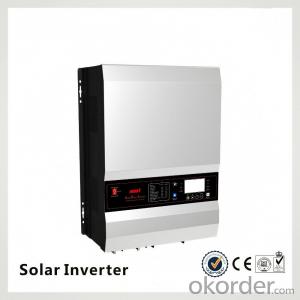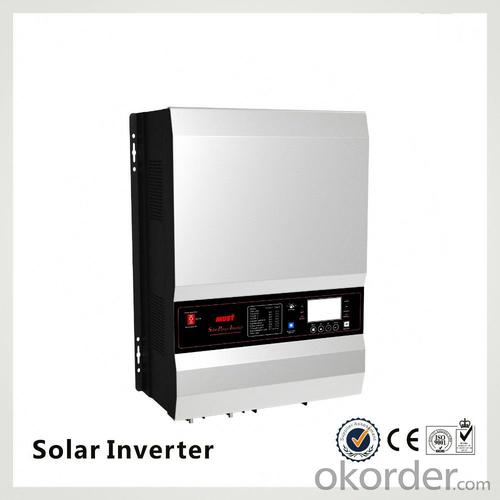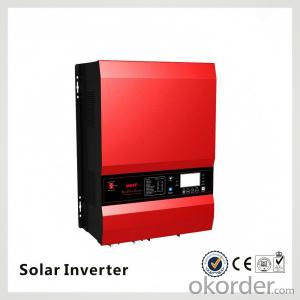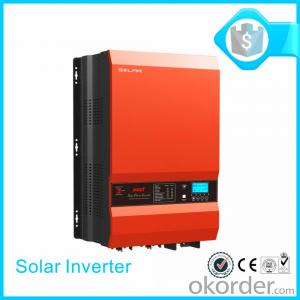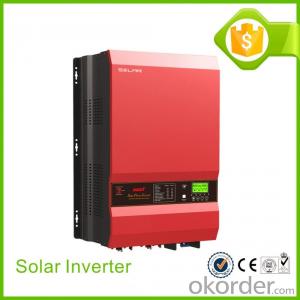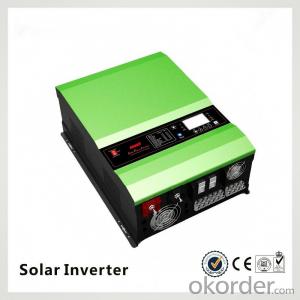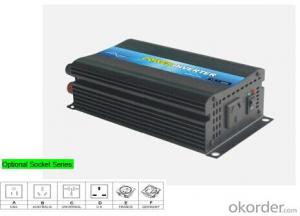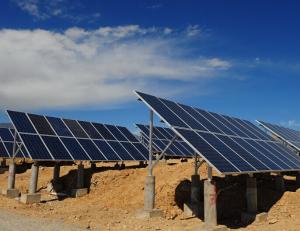Tigo Solar Inverter 1600 Watt Off-Grid Hybrid Solar Power Inverter 1000 2000 3000 4000 5000VA
- Loading Port:
- Shanghai
- Payment Terms:
- TT OR LC
- Min Order Qty:
- 10000 watt
- Supply Capability:
- 100000 watt/month
OKorder Service Pledge
OKorder Financial Service
You Might Also Like
Product Description
What is Solar inverter?
Solar pv inverters is an electronic system that operates the photovoltaic(PV) modules in a manner that allows the modules to produce all the power they are capable of. The solar mate charge controller is a microprocessor-based system designed to implement the MPPT. It can increase charge current up to 30% or more compared to traditional charge controllers.
Features
. Pure sine wave inverter
. Selectable input voltage range for home appliances and personal computers
. Selectable charging current based on applications
. Configurable AC/Solar input priority via LCD setting
. Compatible to mains voltage or generator power
. Parallel operation with up to 6 units only available for PV1800 4KVA/5KVA
. Auto restart while AC is recovering
. Overload and short circuit protection
. Smart battery charger design for optimized battery performance
. Cold start function
Specification
RATED POWER | 1000VA / 800W | 2000VA/ | 3000VA / 2400W | 4000VA / 3200W | 5000VA / 4000W | |||||
INPUT | ||||||||||
Voltage | 230 VAC | |||||||||
Selectable Voltage Range | 170-280 VAC (For Personal Computers) ; 90-280 VAC (For Home Appliances) | |||||||||
Frequency Range | 50 Hz/60 Hz (Auto sensing) | |||||||||
OUTPUT | ||||||||||
AC Voltage Regulation | 230 VAC ± 5% | |||||||||
Surge Power | 2000VA | 4000VA | 6000VA | 8000VA | 10000VA | |||||
Efficiency (Peak) | 90% | 93% | ||||||||
Transfer Time | 10 ms (For Personal Computers) ; 20 ms (For Home Appliances) | |||||||||
Waveform | Pure sine wave | |||||||||
BATTERY | ||||||||||
Battery Voltage | 12 VDC | 24 VDC | 48 VDC | |||||||
Floating Charge Voltage | 13.5 VDC | 27 VDC | 54 VDC | |||||||
Overcharge Protection | 15 VDC | 30 VDC | 60 VDC | |||||||
Maximum Charge Current | 10 A or 20 A | 20 A or 30 A | 60 A | |||||||
SOLAR CHARGER (OPTION) | ||||||||||
Charging Current | 50 A | |||||||||
Maximum PV Array Open Circuit Voltage | 30 VDC | 60 VDC | 105 VDC | |||||||
Standby power Consumption | 1 W | 2 W | 2 W | |||||||
PHYSICAL | ||||||||||
Dimension, D x W x H (mm) | 95 x 240 x 316 | 100 x 272 x 355 | 125 x 297.5 x 468 | |||||||
Net Weight (kgs) | 5.0 | 6.4 | 6.9 | 9.8 | 9.8 | |||||
OPERATING ENVIRONMENT | ||||||||||
Humidity | 5% to 95% Relative Humidity(Non-condensing) | |||||||||
Operating Temperature | 0°C - 55°C | |||||||||
Storage Temperature | -15°C - 60°C | |||||||||
Images
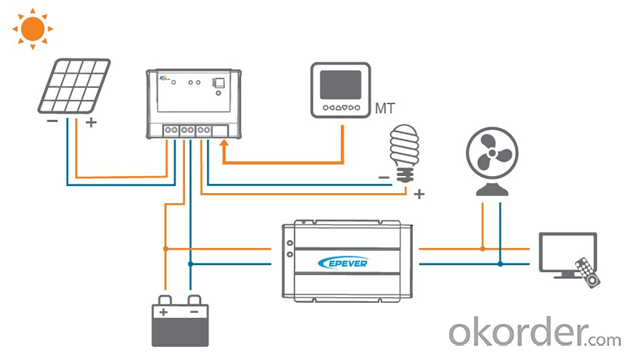
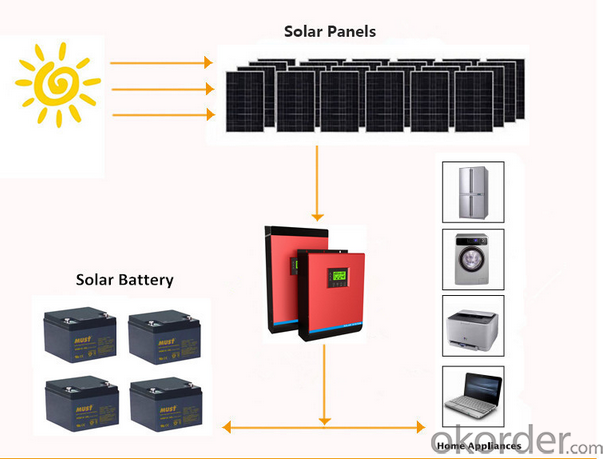
Packaging & Shipping
What is the packing?
1.Package: Carton Box for packaging, or Wooden Box advised for Samples to protect in transportations. Package designed by Clients is welcomed.
2.Shipping: DHL,FEDEX,UPS,EMS,AirWay and By Sea.
3.Payment: T/T( telegraphic transfer (T/T) and Western Union
4.Welcome to your Sample Order to test First.
FAQ
Q1: How to choose a right inverter?
A1:Tell us your demand, then our sales will recommend a suitable inverter to you.
Q2: What's the different between inverter and solar inverter?
A2: Inverter is only accept AC input, but solar inverter not only accept AC input but also can connect with solar panel to accept PV input, it more save power.
Q3: How about the delivery time?
A3: 7 days for sample; 25 days for bulk order.
- Q: Can a solar inverter be used with a remote monitoring system?
- Yes, a solar inverter can be used with a remote monitoring system. In fact, many solar inverters are designed to be compatible with remote monitoring systems, allowing users to monitor their solar energy production, system performance, and troubleshoot any issues remotely. This enables better control and management of the solar power system, ensuring optimal efficiency and performance.
- Q: Can a solar inverter be used with a solar-powered educational system?
- Yes, a solar inverter can be used with a solar-powered educational system. A solar inverter is an essential component that converts the direct current (DC) produced by solar panels into alternating current (AC) that can be used to power electrical devices, including educational systems. By using a solar inverter, the solar energy generated by the system can be efficiently utilized for educational purposes.
- Q: What is the typical installation process for a solar inverter?
- The typical installation process for a solar inverter involves several steps. First, the inverter is mounted in a suitable location, usually close to the solar panels and near the electrical service panel. Then, the DC input wires from the solar panels are connected to the DC input terminals on the inverter. The AC output terminals of the inverter are then connected to the electrical service panel, allowing the generated electricity to be fed into the grid or used by the household. Finally, the inverter is connected to a monitoring system, which enables the user to track the performance and energy production of the solar system. It is important to note that the installation process may vary depending on the specific inverter model and the local electrical codes and regulations.
- Q: The function of photovoltaic grid - connected inverter
- Finally, a sinusoidal AC output for a grid-connected photovoltaic power generation system is generated by a low-pass filter.
- Q: How does a solar inverter handle voltage drop in long cable runs?
- A solar inverter handles voltage drop in long cable runs by compensating for the drop in voltage through a process called voltage regulation. It adjusts the output voltage to ensure that the required voltage level is maintained at the point of connection to the solar panels. This allows for efficient power transmission and ensures that the system operates optimally despite the voltage drop caused by long cable runs.
- Q: What is the importance of insulation resistance measurement in a solar inverter?
- Insulation resistance measurement in a solar inverter is crucial as it helps ensure the safety and efficiency of the electrical system. By measuring the insulation resistance, any potential faults or deteriorations in the insulation can be detected, preventing electrical leakage or short circuits. This measurement also helps identify any insulation breakdowns that may compromise the performance and reliability of the solar inverter. Ultimately, insulation resistance measurement is essential for maintaining the integrity of the solar inverter and ensuring the safety of both the electrical system and the people using it.
- Q: What is the role of a grid protection relay in a solar inverter?
- The role of a grid protection relay in a solar inverter is to monitor the electrical grid and protect against any abnormalities or faults that may occur. It ensures the safe and reliable operation of the solar inverter by detecting and isolating faults such as overvoltage, undervoltage, overfrequency, underfrequency, and other grid disturbances. The grid protection relay acts as a safeguard, preventing any damage to the solar inverter and maintaining the stability of the grid connection.
- Q: Can a solar inverter be used with different battery chemistries?
- Yes, a solar inverter can be used with different battery chemistries as long as the voltage and capacity of the batteries are compatible with the inverter's specifications. However, it's important to note that different battery chemistries may have varying charging and discharging characteristics, so it is advisable to consult the manufacturer's guidelines to ensure optimal performance and safety.
- Q: What are the advantages of using a solar inverter?
- There are several advantages of using a solar inverter. Firstly, a solar inverter converts the direct current (DC) generated by solar panels into alternating current (AC) that can be used to power household appliances and electrical devices. This allows for the efficient utilization of solar energy, reducing reliance on traditional fossil fuel-based electricity sources. Secondly, solar inverters enable the integration of solar power systems with the electrical grid. By synchronizing the generated electricity with the grid, excess power can be fed back into the grid, resulting in net metering or feed-in tariff benefits. This not only reduces electricity bills but also contributes to the overall renewable energy mix, promoting sustainability and reducing carbon emissions. Another advantage is the monitoring and control capabilities provided by solar inverters. Many modern inverters offer real-time monitoring of energy production, allowing users to track the performance of their solar panels and identify any potential issues. Additionally, inverters often come with built-in safety features, such as ground fault protection, to ensure the safe operation of the solar power system. Overall, the advantages of using a solar inverter include efficient conversion of solar energy into usable electricity, integration with the electrical grid, cost savings, environmental benefits, and enhanced monitoring and safety features.
- Q: What are the key factors affecting the lifespan of a solar inverter?
- The key factors affecting the lifespan of a solar inverter include the quality of components used in its manufacturing, the design and construction of the inverter, the operating conditions and environment it is subjected to, and the maintenance and care it receives throughout its lifespan.
Send your message to us
Tigo Solar Inverter 1600 Watt Off-Grid Hybrid Solar Power Inverter 1000 2000 3000 4000 5000VA
- Loading Port:
- Shanghai
- Payment Terms:
- TT OR LC
- Min Order Qty:
- 10000 watt
- Supply Capability:
- 100000 watt/month
OKorder Service Pledge
OKorder Financial Service
Similar products
Hot products
Hot Searches
Related keywords
